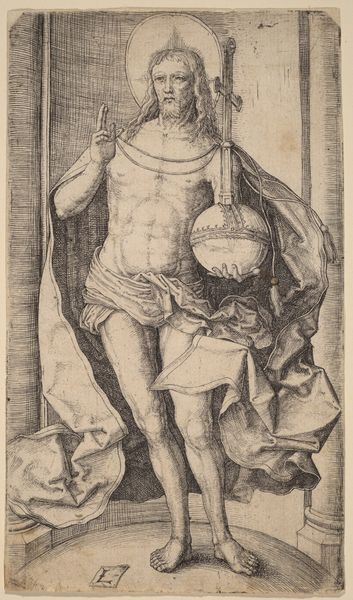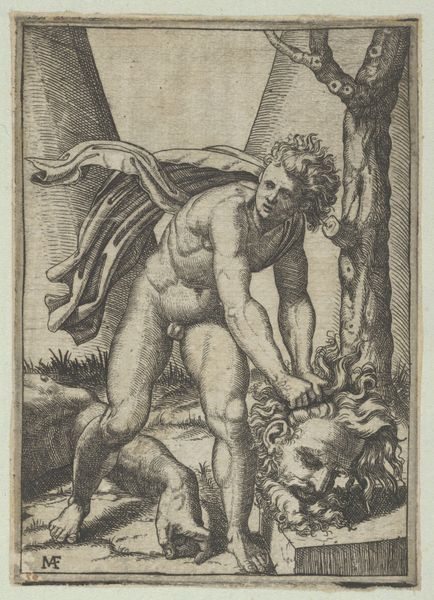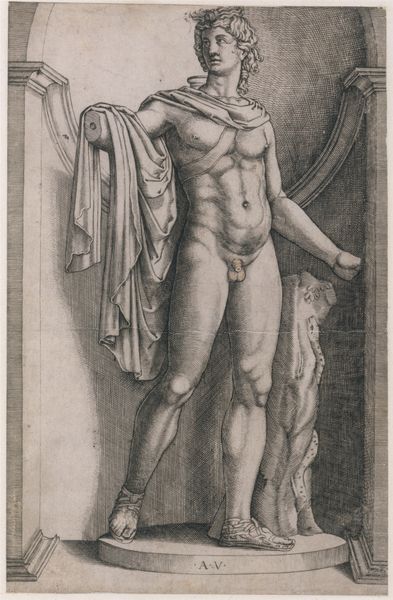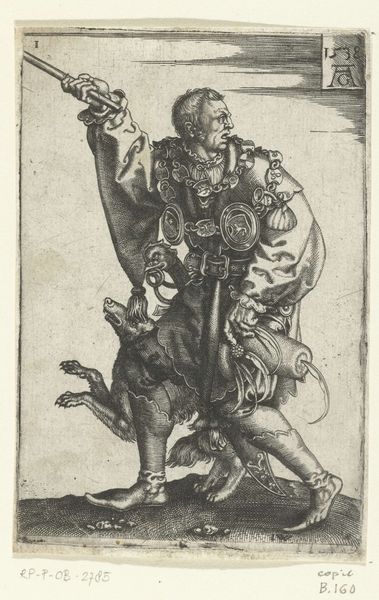
Saint Job, wearing a cloak, from "Piccoli Santi" (Small Saints) 1495 - 1532
0:00
0:00
drawing, print, intaglio, engraving
#
portrait
#
drawing
# print
#
intaglio
#
figuration
#
11_renaissance
#
history-painting
#
italian-renaissance
#
engraving
Dimensions: 3 1/4 x 1 15/16 in. (8.2 x 4.9 cm)
Copyright: Public Domain
Marcantonio Raimondi made this print of Saint Job in the 16th century, using a technique called engraving. This involved carving lines into a copper plate, inking it, and then pressing paper against the plate to transfer the image. Look closely, and you’ll notice the fine network of lines that define the figure. Raimondi was a master of this process, using the incised lines to create a range of textures and tones. Notice, for example, how the lines are closer together in the darker areas of the print, and further apart in the lighter areas. This technique allows him to model the form of Saint Job, giving a sense of depth and volume. Engraving was a skilled craft, requiring years of training to master. It was also a labor-intensive process, with each print requiring the artist to carefully carve the image into the plate. Prints like this one were relatively affordable, and widely available. Paying attention to the materials and processes used to create an artwork like this helps us understand its cultural significance. It also challenges the traditional hierarchy between fine art and craft, recognizing the skill and artistry involved in all forms of making.
Comments
No comments
Be the first to comment and join the conversation on the ultimate creative platform.













